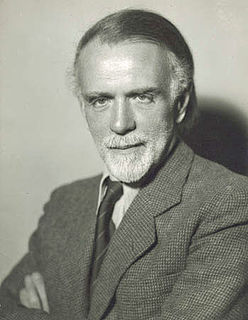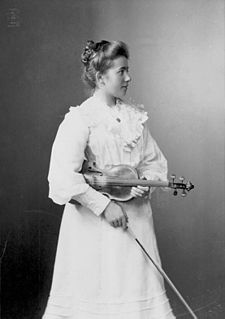 W
WKornél Ábrányi was a Hungarian pianist, music writer and theorist, and composer. He was born in Szentgyörgyábrány. A pupil of Frédéric Chopin, and a close friend of Franz Liszt, whose music he championed, Ábrányi chiefly wrote music for piano, but also composed chamber music, choral works, and lieder. He began teaching at the Franz Liszt Academy of Music at its founding in 1875 and became its Secretary.
 W
WBéla Viktor János Bartók was a Hungarian composer, pianist, and ethnomusicologist. He is considered one of the most important composers of the 20th century; he and Franz Liszt are regarded as Hungary's greatest composers. Through his collection and analytical study of folk music, he was one of the founders of comparative musicology, which later became ethnomusicology.
 W
WIlona Durigo was a Hungarian classical contralto and an academic voice teacher. She appeared internationally, mostly in concert, singing Lieder and oratorios. She is known for singing Lieder that Othmar Schoeck composed for her, and is regarded as one of the leading concert contraltos of her era.
 W
WFerenc Erkel was a Hungarian composer, conductor and pianist. He was the father of Hungarian grand opera, written mainly on historical themes, which are still often performed in Hungary. He also composed the music of "Himnusz", the national anthem of Hungary, which was adopted in 1844. He died in Budapest.
 W
WCarl Flesch was a violinist and teacher.
 W
WVictor von Herzfeld was a Hungarian violinist and composer. He studied at the University of Vienna in law and at the Music Academy of Vienna music where he won first prize for both composition and violin playing. In 1884, he was awarded the Beethoven prize of the Society of the Friends of Music. He studied in Berlin with Eduard Grell and in 1886 went to Budapest as Professor in the Music Academy. He was second violin in the original Budapest Quartet established by David Popper and Jenő Hubay. Ernő Dohnányi dedicated his Sonata in C♯ minor for violin and piano, Op. 21 (1912) to Von Herzfeld. While serving as the music critic of the "Neue Pester Journal" he wrote a negative review of his friend and colleague Gustav Mahler's First Symphony. He is the author of a 1915 article on Robert Volkmann. He was buried at Kerepesi Cemetery in Budapest.
 W
WJenő Hubay, Jenő Hubay von Szalatna, Hungarian: szalatnai Hubay Jenő, also known by his German name Eugen Huber, was a Hungarian violinist, composer and music teacher.
 W
WRafael Joseffy was a Jewish pianist, teacher and composer.
 W
WBéla Kéler was a Hungarian composer of romantic music period and orchestral conductor. Béla Kéler was born as Albert Paul Keler. He is also known in Hungarian as Kéler Béla. He was born on 13 February 1820 in City of Bártfa, Sáros County, Kingdom of Hungary, Austrian Empire, and died on 20 November 1882 in Wiesbaden, German Empire. He was active in Hungary, Austria and Germany.
 W
WZoltán Kodály was a Hungarian composer, ethnomusicologist, pedagogue, linguist, and philosopher. He is well known internationally as the creator of the Kodály Method.
 W
WIzabella Kuliffay was a Hungarian pianist and composer. She was born in Pest, and studied music at the National Conservatory in Budapest from 1877–79, and the Budapest Academy of Music from 1879–83, with teachers including Kornel Abranyi and Gyula Erkel. Her work was also heavily influenced by Franz Liszt.
 W
WEugene Lehner was a violist and music educator.
 W
WGeorge Lichtenstein was a Hungarian pianist and music teacher who lived and worked in Edinburgh, Scotland.
 W
WFranz Liszt was a Hungarian composer, virtuoso pianist, conductor, music teacher, arranger, and organist of the Romantic era. He is widely regarded as one of the greatest pianists of all time. He was also a writer, philanthropist, Hungarian nationalist, and Franciscan tertiary.
 W
WJános Négyesy was a Hungarian violinist with a particular interest in contemporary music. He performed world premieres of numerous works, the first two books of the Freeman Etudes by American composer John Cage among others. He was also the first European violinist who recorded the complete Violin and Piano Sonatas of Charles Ives. He is the author of a teaching and reference book on violin techniques, which was commissioned after he met Pierre Boulez at IRCAM in 1976. In 1979, he joined the faculty of the University of California at San Diego.
 W
WPálma von Pászthory was an Austrian-German violinist.
 W
WMiklós Perényi is a Hungarian cellist. He was born in Budapest into a musical family and studied at the Ferenc Liszt Academy of Music in Budapest with Ede Banda and Enrico Mainardi. He continued his studies at the Accademia Santa Cecilia, graduating in 1962. In 1963 he won a prize at the Pablo Casals International Violoncello Competition in Budapest.
 W
WFranz Schmidt, also Ferenc Schmidt was an Austro-Hungarian composer, cellist and pianist.
 W
WGyörgy Sebők was a Hungarian-born American pianist and professor at the Indiana University's Jacobs School of Music in Bloomington, Indiana, United States.
 W
WJános Starker was a Hungarian-American cellist. From 1958 until his death, he taught at the Indiana University Jacobs School of Music, where he held the title of Distinguished Professor.
 W
WHans Swarowsky was an Austrian conductor of Hungarian birth.
 W
WEmil Telmányi was a Hungarian violinist.
 W
WKároly (Carl) Thern was a Hungarian composer, pianist, conductor and arranger. He was of German descent, but was among the second generation of composers who developed the language of Hungarian art music.
 W
WZdenka Ticharich was a Hungarian pianist, music educator and composer.
 W
WImre Waldbauer was a Hungarian violinist and music teacher.
 W
WEde Zathureczky was a Hungarian violin virtuoso and pedagogue.
 W
WNándor Zsolt was a Hungarian violinist, conductor, composer and the professor of violin at the Franz Liszt Academy of Music.